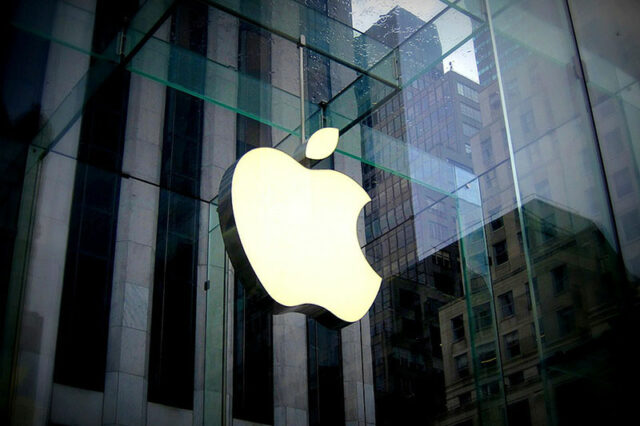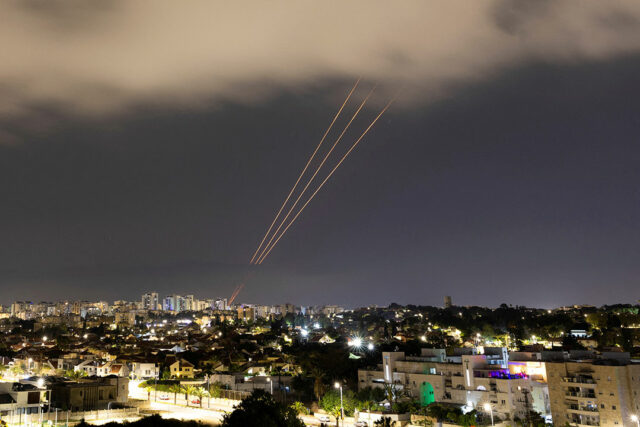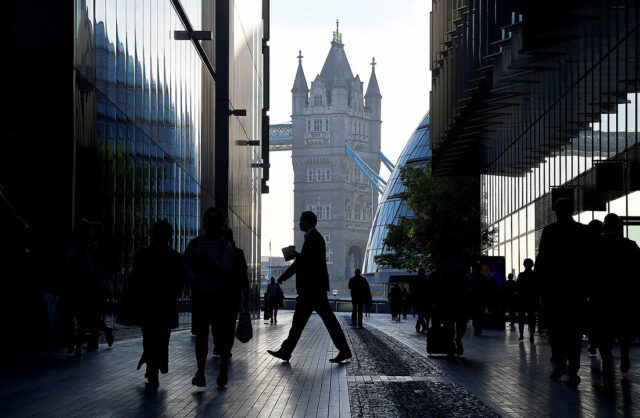US growth may be a global boon, but inflation could derail the train
WASHINGTON – US economic growth that keeps motoring above its potential is emerging as a key prop for an ongoing global expansion, but spillovers from persistently high inflation and tight monetary policy in the world’s largest economy could pose new risks to a hoped-for “soft landing” around the world.
As global financial leaders gather in Washington this week for the spring meetings of the International Monetary Fund and World Bank, the outlook for the world’s short-term economic fortunes may center on whether the surprising U.S. success is being driven more by constructive forces like increased labor supply and productivity or by outsized fiscal deficits that continue stoking demand and, potentially, inflation.
One answer supports what Chicago Federal Reserve President Austan Goolsbee has labeled a “golden path” where strong growth and falling inflation coexist, not only in the US but in other countries tied to it through exchange rates and trade channels that have kept imports near record highs. The other may point to a bumpy ride ahead if the Fed concludes that U.S. demand remains too strong for inflation to fall, and decides it has to postpone expected interest rate cuts or – in the extreme – resort to rate hikes it had all but taken off the table.
Recent data have not been helpful, with inflation stalled well above the US central bank’s 2% target for the first quarter of the year, gross domestic product still expanding above potential at 2.4% for the January-March period, according to an Atlanta Fed tracker, and Fed officials hedging their words about when the rate cuts might start.
“We’re not yet where we want to be on inflation,” Richmond Fed President Thomas Barkin said last week, capping a seven-day run over which US jobs data showed firms hired an additional 303,000 workers in March, two to three times the estimated non-inflationary pace, and new inflation data further reversed the trends Fed policymakers relied on last year to pivot towards rate cuts in 2024. Data on inflation expectations, closely monitored by the Fed, also points to progress having stalled.
The data registered quickly in markets that lowered the outlook for a Fed monetary easing, something global officials no doubt have noticed ahead of discussions this week that may center on whether the world’s post-pandemic bout of inflation and tight monetary policy is ending, or simply on hold until it is clear what happens in the US
WATCHING FROM ABROAD
The IMF’s latest World Economic Outlook summary of the global economy will be released on Tuesday.
But recent US data already have had repercussions.
Though the European Central Bank has kept its rate-cut and inflation outlooks intact for now, ECB President Christine Lagarde’s press conference on Thursday was dominated by questions of just how far the euro zone’s monetary policy could diverge from that of the Fed if US inflation persists. Other central bankers were more explicit that an extended inflation fight in the US would constrain what they might be able to do.
“It’s not just about whether the Fed can decide to act in June or a bit later, it’s the entire monetary policy for maybe a year that is under question,” Per Jansson, deputy governor of Sweden’s Riksbank, told reporters, adding there was “not a zero chance” that the Fed might have to discuss whether further hikes in borrowing costs are needed.
That is not the baseline. The Fed’s last round of economic projections, issued in March, showed none of its policymakers anticipated needing to move the US central bank’s benchmark overnight interest rate above the current 5.25%-5.50% range, where it has been since July.
But there was also a wedge creeping in, with minutes of the Fed’s March 19-20 policy meeting showing that “some participants” said overall financial conditions may not be as tight as suspected, “which could add momentum to aggregate demand and put upward pressure on inflation,” the sort of dynamic that, if sustained, could argue for higher rates.
Strong growth in the face of the highest policy rate in a quarter of a century has raised a series of questions for the Fed – and by extension for the global economy – about whether the impact of monetary policy is just slow to be felt, with a US nosedive coming, or whether aspects of the economy like labor participation and productivity have changed for the better.
ELEVATED RISKS
The US Congressional Budget Office recently raised its outlook for potential US economic growth on the basis of increased immigration and labor productivity, factors that would allow the economy to expand without generating inflation.
While Fed officials have acknowledged that both forces helped bring down the pace of price increases last year at a surprisingly fast rate – paving the way for what some have dubbed an “immaculate disinflation” – it’s unclear how deep that well goes.
If it’s determined the economy remains too strong or financial conditions too loose for a full return of inflation to the Fed’s target, the U.S. divergence now helping pull the world upward may turn into a tight-money drag.
“I think the Fed’s in watching-and-waiting mode,” with perhaps only a single quarter-percentage-point rate cut this year, said Karen Dynan, a Harvard University professor and non-resident senior fellow at the Peterson Institute for International Economics.
While she does expect tighter policy to “take the edge off” demand and slow the US economy, worse outcomes can’t be ignored as long as the inflation problem persists.
“It’s really a ‘soft landing’ forecast … but I do think the risks of recession are somewhat elevated in the United States and other countries,” she said. – Reuters
















